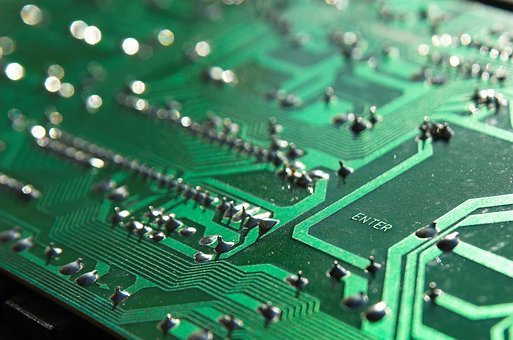PCB (Printed Circuit Board) plays an important role in today’s life. It is the foundation and highway of electronic components. In this regard, the quality of the PCB is critical.
To check the quality of a PCB, several reliability tests must be performed. The following paragraphs are an introduction to the tests.
1. Ionic contamination test
Purpose: To check the number of ions on the surface of the circuit board to determine whether the cleanliness of the circuit board is qualified.
Method: Use 75% propanol to clean the sample surface. Ions can dissolve into propanol, changing its conductivity. Changes in conductivity are recorded to determine ion concentration.
Standard: less than or equal to 6.45ug.NaCl/sq.in
2. Chemical resistance test of solder mask
Purpose: To check the chemical resistance of the solder mask
Method: Add qs (quantum satisfied) dichloromethane dropwise on the sample surface.
After a while, wipe the dichloromethane with a white cotton.
Check to see if the cotton is stained and if the solder mask is dissolved.
Standard: No dye or dissolve.
3. Hardness test of solder mask
Purpose: Check the hardness of the solder mask
Method: Place the board on a flat surface.
Use a standard test pen to scratch a range of hardness on the boat until there are no scratches.
Record the lowest hardness of the pencil.
Standard: The minimum hardness should be higher than 6H.
4. Stripping strength test
Purpose: To check the force that can strip copper wires on a circuit board
Equipment: Peel Strength Tester
Method: Strip the copper wire at least 10mm from one side of the substrate.
Place the sample plate on the tester.
Use a vertical force to strip the remaining copper wire.
Record strength.
Standard: The force should exceed 1.1N/mm.
5. Solderability test
Purpose: To check the solderability of pads and through-holes on the board.
Equipment: soldering machine, oven and timer.
Method: Bake the board in an oven at 105°C for 1 hour.
Dip flux. Put the board firmly into the solder machine at 235°C, and take it out after 3 seconds, checking the area of the pad that was dipped in tin. Put the board vertically into a soldering machine at 235°C, take it out after 3 seconds, and check whether the through hole is dipped in tin.
Standard: Area percentage should be greater than 95. All through holes should be dipped in tin.
6. Hipot test
Purpose: To test the withstand voltage capability of the circuit board.
Equipment: Hipot tester
Method: Clean and dry samples.
Connect the board to the tester.
Increase the voltage to 500V DC (direct current) at a rate not higher than 100V/s.
Hold it at 500V DC for 30 seconds.
Standard: There should be no faults on the circuit.
7. Glass transition temperature test
Purpose: To check the glass transition temperature of the plate.
Equipment: DSC (Differential Scanning Calorimeter) tester, oven, dryer, electronic scales.
Method: Prepare the sample, its weight should be 15-25mg.
The samples were baked in an oven at 105°C for 2 hours, and then cooled to room temperature in a desiccator.
Put the sample on the sample stage of the DSC tester, and set the heating rate to 20 °C/min.
Scan twice and record Tg.
Standard: Tg should be higher than 150°C.
8. CTE (coefficient of thermal expansion) test
Target: CTE of the evaluation board.
Equipment: TMA (thermomechanical analysis) tester, oven, dryer.
Method: Prepare a sample with a size of 6.35*6.35mm.
The samples were baked in an oven at 105°C for 2 hours, and then cooled to room temperature in a desiccator.
Put the sample on the sample stage of the TMA tester, set the heating rate to 10°C/min, and set the final temperature to 250°C
Record CTEs.
9. Heat resistance test
Purpose: To evaluate the heat resistance of the board.
Equipment: TMA (thermomechanical analysis) tester, oven, dryer.
Method: Prepare a sample with a size of 6.35*6.35mm.
The samples were baked in an oven at 105°C for 2 hours, and then cooled to room temperature in a desiccator.
Put the sample on the sample stage of the TMA tester, and set the heating rate at 10 °C/min.
The sample temperature was raised to 260°C.
Chengyuan Industry Professional Coating Machine Manufacturer
Post time: Mar-27-2023


